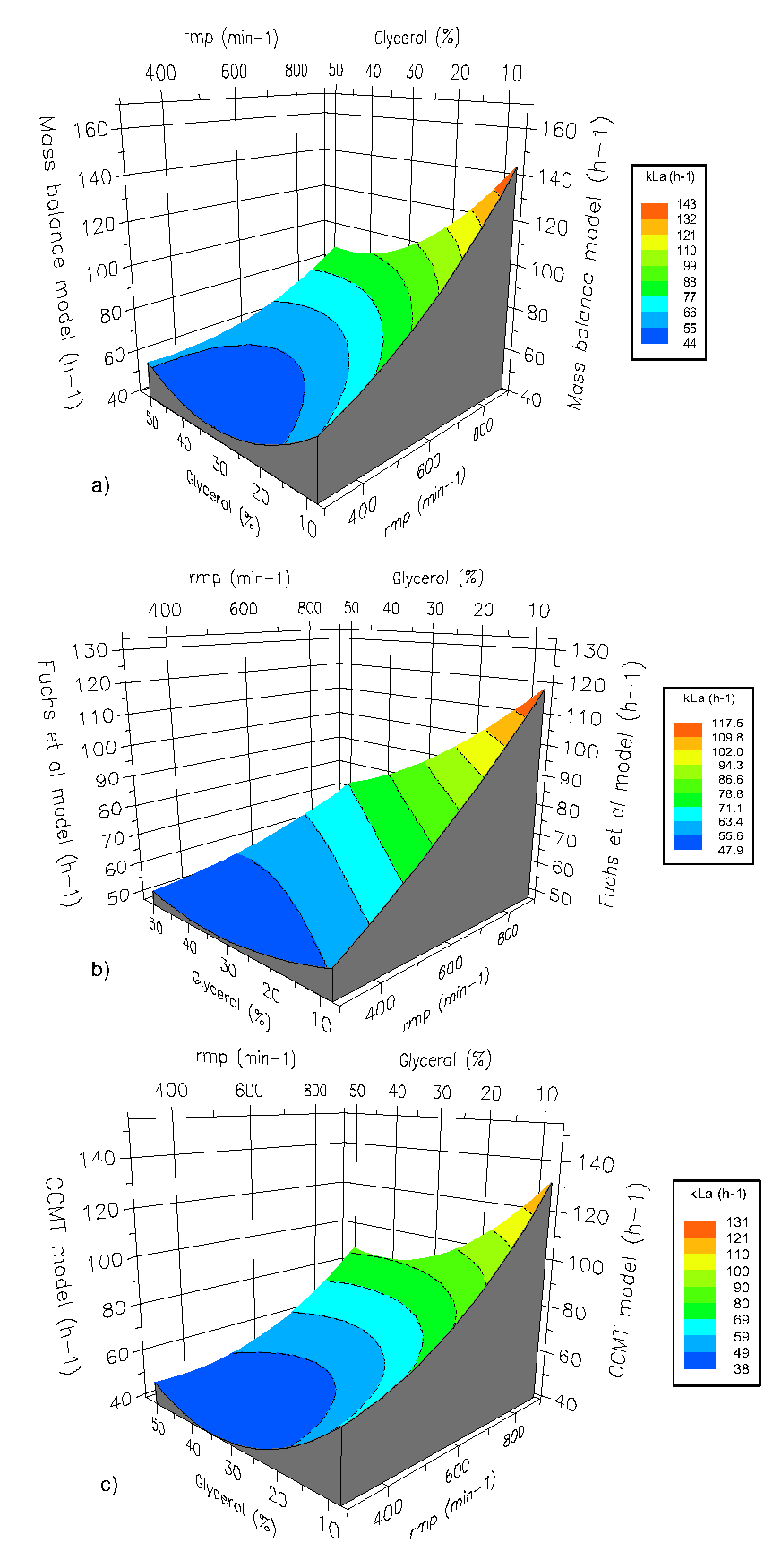 |
|
The objective of this work was to propose a Convective Conformable Mass Transfer model (CCMT) to estimate mass transfer coefficients (kLa) in bioreactors. The model employs a conformable derivative order operator (α), which is a function of the electrode constant (kP), and this constant changes with the use of the electrode and the operating conditions of the bioreactor. A complete mixed-level experimental design with two factors: agitation and the glycerol-buffer ratio was used to validate the model. The results showed that when the viscosity increases and the agitation decreases, α increases, and vice versa. Alpha is a parameter derived from the conformable calculus but could also have a physical meaning in the process. The CCMT model was compared with two conventional models, the correlation matrix of the experimental data and the three models studied, and the F-test (p>0.05) showed that the three models adequately describe the experimental data. Using the Akaike and Bayesian information criteria, they were determined that of the three compared models the CCMT model fits the experimental data more adequately according to the parameters of each model (72, 55, and 42%, respectively). This work proposes an additional alternative for the determination of kLa in bioprocesses.
Keywords: fractional calculus; conformable derivative; mathematical model; volumetric oxygen transfer coefficient; Akaike and Bayesian information criterion.
|
|
 |

